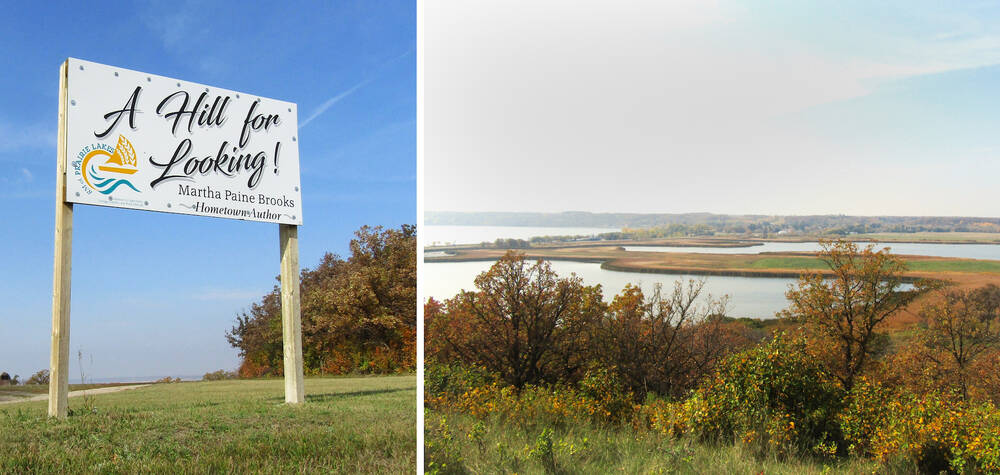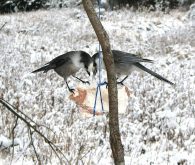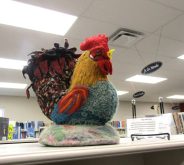From Nellie McClung to Margaret Laurence, rural Manitoba has been home to many notable authors. Often, the author’s background has influenced the topics they write about and where they place their stories.
Day trippers this summer can get a taste of local literary culture by visiting the setting for novels or places where their writers grew up.
For fans of Margaret Laurence, a trip to western Manitoba might be worth the drive.
Read Also

MANITOBA AG DAYS 2026: Stacked equipment category expected at Innovation Showcase
Ten of 28 Innovation Showcase entries at the Manitoba Ag Days 2026 farm show Jan. 20-22 in Brandon are in the equipment category.
Laurence spent her early years in Neepawa. Several of her works are set in the fictional town of Manawaka, loosely based on her home community, and some of her characters reportedly echo traits of people she knew there. “The Diviners”, “The Stone Angel” and “A Jest of God” are three of the five books in the Manawaka series.
Visitors can start at Margaret Laurence House, a provincial heritage site at 312 First Avenue in the town of Neepawa. The house belonged to her grandfather, and Laurence lived there from 1935-44. In front of the house is a plaque honouring the author as a “Person of National Historic Significance.”
The house is open daily between the May long weekend and early September. Hours are 10 a.m. to 5 p.m. and there is a small charge for entry. Rooms display original furniture, as well as artifacts and memorabilia donated by her family, such as Laurence’s typewriter.
The author’s gravesite lies in the northeast corner of town, at the Riverside Cemetery. Get directions at Margaret Laurence House gift shop, or go east on Elizabeth Street to 1 Smith Drive. Entering from the west, go straight ahead and park near the southeast corner to locate the grave.
The monument said to have inspired “The Stone Angel” stands near the centre of the same cemetery, although the real-life statue depicts a shepherdess with flowers and a cross.
Martha Brooks is another Manitoba author with a rural background. Her father, Dr. Al Paine, was medical superintendent and chief surgeon at the Ninette Sanatorium for tuberculosis from 1946 until it closed in 1972.
Brooks grew up in the area and most of her books take place in and around the sanitorium. Her works explore the life experience of tuberculosis patients in the ‘40s and ‘50s.
Much of her work is for young adults, but she has two adult novels: “A Hill for Looking” and “Dear Miss Lovelorn, Prose and Possibility”, her newest work published last year.
The sanitorium’s buildings were put to other uses after the facility’s closure, but now sit vacant. Visitors can still explore the grounds and see the remaining structures on the site behind Ninette’s present-day campground.
A picnic site also sits off Highway 23, just up the hill from the sanatorium. The spectacular view overlooks the lake and town and is named “A Hill for Looking” in honour of Brooks.
A third author who based novels in rural Manitoba is francophone writer Gabrielle Roy. She was born in St. Boniface, but spent time in rural Manitoba. “Where Nests the Waterhen” takes place in northwestern Manitoba, north of Ste. Rose du Lac along the Waterhen River.
In French, the book is called “La Petite Poule d’Eau,” the term used for the American coot or mudhen.
The story is often described as partly autobiographical, featuring a young woman in a remote part of Manitoba teaching poor, isolated students.
Roy did teach in rural Manitoba for a short while in the villages of Marchand and Cardinal, south of Treherne, and on a temporary position at Waterhen in the summer of 1937. Another of her books, “The Road Past Altamont,” explores southern Manitoba.
Readers wishing to explore Roy’s settings could drive north of Ste. Rose du Lac and Rorketon to watch for the titular bird along the river and marshes.
There is also La Maison Gabrielle Roy at 375 Rue Deschambault in St. Boniface, Winnipeg. This house, where she lived for about 28 years, is a museum with artifacts from the era. It is open each day in summer and has shorter hours in spring and fall.
Artifacts from another, earlier, Manitoba writer might also interest readers. Nellie McClung, the famous author and activist in the suffragette movement, lived and taught in the Manitou area in the late 1800s and early 1900s.
Two houses where she once lived now form the Nellie McClung Heritage Site in Manitou at 55 Main Street. The cheerfully yellow Hazel Cottage is where McClung boarded in 1890 at the start of her teaching career. McClung House, built in 1896, is where she lived with her husband and wrote some of her early books.
Both structures were previously displayed at the Archibald Museum, operated by the Wallcraft family. The houses were moved to Manitou in 2017 after the museum closed, where they were repaired and repainted. Both are furnished with pioneer artifacts and period clothing.
The site also features a rustic log house with a gift shop and tourist information.
The Nellie McClung Heritage Site is open during the summer months from Wednesday to Sunday. For more information, call 204-242-4241.
One more literary Manitoba setting requires a bit of a walk, and its subject is more controversial. Consider a hike or bike through Riding Mountain National Park to the cabin of Grey Owl, also known as Archie Belaney.
Belaney was born English, but claimed to be Indigenous during his career as a conservationist — a ruse that was only exposed after his death. As an author, he wrote about protecting wildlife, and beavers in particular. He spent part of 1931 in the park, but ultimately decided the site he chose wasn’t suitable for his plans to re-introduce beavers.
The Grey Owl cabin, located at the apex of a 15-kilometre return trail, is recognized as a federal heritage building. The trailhead is located on Highway 19. This would make for a different type of daytrip for those who are more energetic.















